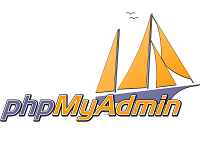PHP MyAdmin
phpMyAdmin is one of the popular client software tools with an extraordinary user interface that helps to perform database handling operations effectively.
This tool will reduce our burden on having such a user interface to perform some simple and basic database operations directly, instead of writing queries for obtaining them.
We can also write queries using the query editor provided with phpMyAdmin, for getting some complex results. For example, getting results from more than one table, as a result of MySQL join queries.
Overview
In this article, we are going to see about phpMyAdmin more in detail on recollecting its history, features and etc as follows.
- Evolution of phpMyAdmin
- Features of phpMyAdmin
- Basic Requirements to Access phpMyAdmin
- phpMyAdmin Configuration
Evolution of phpMyAdmin
Initially, Tobias Ratschiller came up with the idea of creating an administration tool to manage MySQL databases, hence, the development of phpMyAdmin was started by him.
Later, a few developers take over this project to continue with its development, since, it contains considerable popularity in its initial stage itself.
phpMyAdmin crosses several milestones with its development. And, on each level, it has been released with some added features that took it to the next advanced stage. Among them, some recent releases are listed below.
- phpMyAdmin 4.0.5 – It is released with the addition of security and bug fixing features. This version of the database admin tool will be compatible with PHP version 5.2 and MySQL version 5.
- phpMyAdmin 4.0.0 – Changes with display contains tree-based navigation and a good look and feel for documentation.
- phpMyAdmin 3.5.0 – Provides support for managing drizzle database; changes with database events and triggers.
- phpMyAdmin 3.3.0 – In this version new modules are added for import and export features. It provides support for synchronization, configuration and etc.
Features of phpMyAdmin
phpMyAdmin is the oldest database administration tool started in 1998. But, still, it is the most popular client software managing databases. The reason is, that, it is refined and upgraded with new features by foreseeing the requirements of the current user.

Let us look into some of its features impacting its popularity.
- MySQL Admin tool with a simple user interface provides user interaction.
- It facilitates users to perform all basic database CRUD operations easily, by not expecting the user to enter queries, instead. Not only CRUD but also have controls to perform other MySQL operations, like, indexing, sorting and etc.
- It contains a wizard for executing complex user-customized queries for getting results with the tedious comparison.
- This tool maintains statistics regarding server execution time, traffic, query statistics and etc.
- It allows the user to backup database structure, data, or both by using the export feature.
- Similarly, the user can import external backup files that contain information to be stored in the database.
- Multi-user storage facility.
- Multi-server compatibility.
- Handling configuration and server variables from the admin interface.
Basic Requirements to Access phpMyAdmin
Since phpMyAdmin is a tool developed in PHP, it requires to have some basic requirements needed for running a PHP project to access this tool. Such requirements are a web server, web client, PHP and MySQL Databases.
- Web Server – All PHP-compatible servers can be used as a web server to access phpMyAdmin after installing the related files into it.
- Web Client – Obviously, we can only access the phpMyAdmin project by the use of a browser without any client-side restrictions, like, disabling Javascript or cookies.
- PHP – We must have to install PHP 5.3 or a later version for getting access to this PHP project. And, we should also configure with a php.ini file to set the appropriate directives, for using phpMyAdmin in our PHP environment.
- MySQL Databases – With this database client, we can manage all databases, that are compatible with MySQL server, like, MySQL, MariaDB and etc.
phpMyAdmin Configuration
phpMyAdmin can be easily installed as part of the open-source web application coming under the AMP stack, like LAMP, WAMP, XAMPP installation and etc. Otherwise, we can separately extract the downloaded distribution file into the PHP document root directory, if we are not using any web application software like WAMP, or XAMPP.
And then, this project configuration is maintained with the file config.inc.php. we need to set the configuration with this file either manually or by using the user interface provided with the setup script option. Some important settings provided with a phpMyAdmin config file, are,
- Preliminary settings – Path specifying phpMyAdmin root, flags controlling error and warning notices, default variable settings, version compatibility check, and assigning limits are handled at this level.
- Server settings – It includes, a set of configuration parameters that deal with server connection.
- Authentication settings – Cookie authentication, and captcha settings are coming under this category.
- User interface settings – Navigation settings, settings regarding show/hide data statistics, structures and etc will be configured for the phpMyAdmin user interface.
